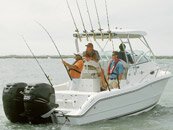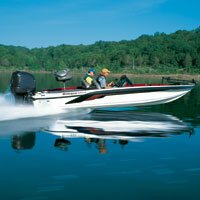Monofilament Saltwater Fishing Line
An inexpensive, stretchy line that casts well and has good knot strength. Saltwater monofilaments usually range from 12-pound to 130-pound test and can be spooled on smaller spinning and baitcasting reels. Best applications for monofilament include trolling, live bait fishing, kite fishing and jigging.
Braided Saltwater Fishing Line
A strong, sensitive line made from woven fibers of Dacron, Spectra or other man-made materials. Thin diameter braids cast well on spinning tackle for fishing open flats; heavier braids on baitcast reels are required when fishing around mangroves, in kelp and jigging on the bottom.
Fluorocarbon Saltwater Fishing Line
A line that is nearly invisible since its refractive index is similar to water. The line has minimal stretch and increased abrasion resistance making it ideal for jig fishing in rocks, reefs and rigs or for leader material for surf casters and fly rod tactics.
Wire
Single strand wire is a leader mainstay for toothy species such as king and Spanish mackerel, wahoo, bluefish and sharks. Single strand is thinner and stronger for leader material but braided wire bends easier for knot tying and is used as a main line.
Spooling Fishing Line
For spinning reels, lay the line spool on the floor and pinch the line between your fingers to keep pressure on the line as it fills the reel spool. If the line shows signs of twisting and coiling after 20 or so cranks on the reel, flip it over and continue. Fill baitcast reels by placing a pencil through the line spool and holding it so the line comes off the top of the spool. This technique prevents line twist on baitcasting reels.
Setting the Drag
The drag should be set at one-third of the pound-test of the line (10 pounds of drag for 30-pound test line). Set the drag by pulling on the line with a hand scale and tighten the drag when the scale reaches the desired amount of pressure.

